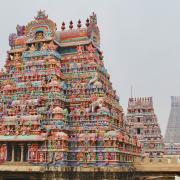
In York Gardens, Battersea, trees protectors have positioned themselves in the branches of a 100 year old black poplar tree to prevent it from being felled.
The tree was due to get the chop on Monday 22nd to make way for a cable; this was being run under the tree as part of a housing development project going on there. The tree protectors took to the tree early on Monday morning and have been there ever since (now at 5 days strong).
Their passion and bravery is backed up by the wealth of scientific evidence of the detrimental effects of cutting down trees. Trees can intercept and absorb airborne particulates, especially PM10 (particulate matter of 10 micrometres or less in diameter), but also ozone, SO2 and NOx. Indeed, it’s been found that a single tree can reduce PM concentration by 15-20% (Mitchell and Maher 2009), although the figure falls to <5% in highly polluted areas. This makes all trees, but especially this tree, located in one of the most polluted boroughs in London, of the utmost importance. Given that the WHO has named air pollution the greatest environmental health risk, no longer can such factors be overlooked.
It’s not just, air pollution, though, that trees can help with. As well as drawing CO2 out of the atmosphere for photosynthesis, trees store carbon in their wood, and the planting of trees leads to a gradual accumulation of carbon in the soil, too. Once mature, carbon constitutes approximately 50% of the dry mass of trees, and, crucially, this carbon is only released back into the atmosphere when the wood is burnt. The rate of sequestration increases with a tree’s age, so given this tree is 100 years old, it’s sequestration value will be extremely high. Cutting it down means we lose potentially years of such essential biological processes and, in a small way, damages our climate.
Other ecological benefits of trees include their abilities in microclimate influence, flood alleviation (their roots and crown slow rainfall), noise regulation, erosion control, shade provision (which can reduce temperatures in heatwaves), pest control, oxygen production and wildlife support. This tree, for example, is home to an active birds’ nest, and many smaller species will also be dependent on it to survive.
Quite apart from the science, this tree is central to a community. Many of the nearby residents have known it for years, and Maria, 6, who lives in the building opposite, told me that she would “cry every day” if the tree was cut down. Especially in a lockdown, such trees and greens spaces can do unquantifiable good for wellbeing and mental health, something that should surely be a priority of local government.
The issue is, of course, not clear cut. The cable itself would be laid to support a new housing block that is planned; housing is, of course, a valid and essential pursuit. The decision is therefore not easy for the council, but what is clear is that the actions of these brave tree protectors are to be roundly commended.



























